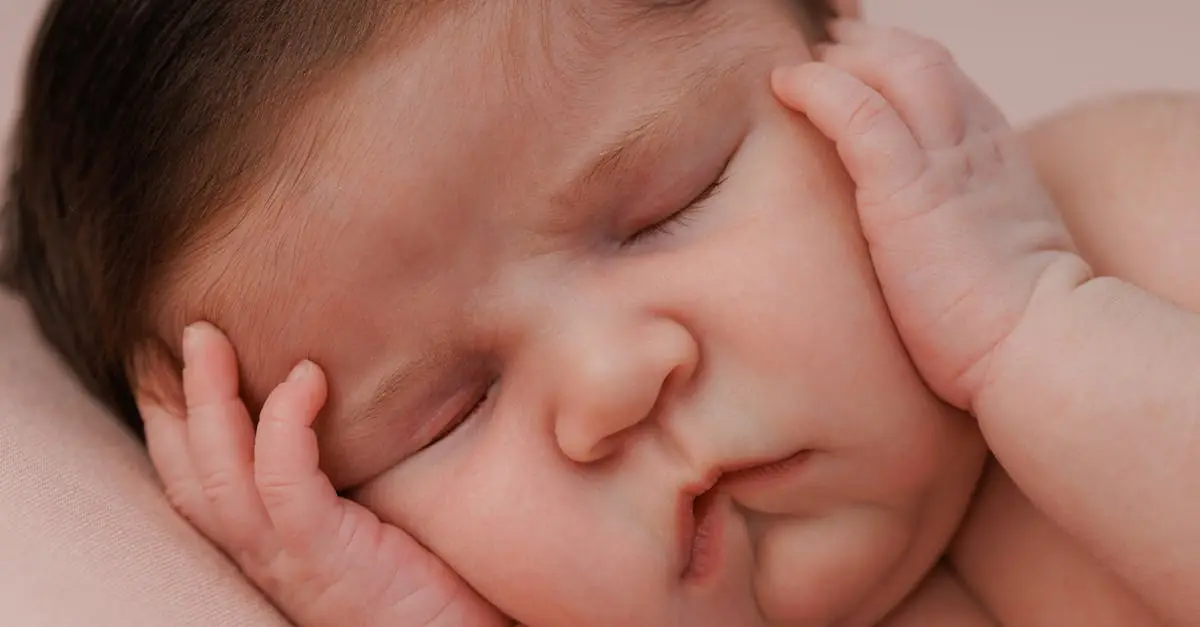Table of Contents
ToggleIn a world where counting sheep just doesn’t cut it anymore, sleep trackers have emerged as the tech-savvy solution to our nightly woes. These nifty devices promise to transform chaotic slumbers into peaceful nights, all while feeding you data that sounds way more impressive than your average bedtime story. Who wouldn’t want to know how many times they tossed and turned like a human pretzel?
Overview of Sleep Trackers
Sleep trackers provide insights into sleep quality, helping individuals understand their nightly rest. These devices monitor various metrics, including sleep duration, cycles, and disruptions, offering a comprehensive look at sleep patterns. Many models utilize sensors to collect data, with some being wearable while others might integrate directly into bedding or smartphones.
Users benefit from sleep tracking through detailed reports. Apps connected to sleep trackers often present graphs and charts for easy interpretation, highlighting trends over time. Analyzing this information can lead to informed decisions regarding lifestyle adjustments to enhance sleep quality.
Advanced features often include sleep stage analysis and heart rate monitoring, which can indicate overall health. Certain trackers offer personalized insights by adapting recommendations based on collected data. Integration with smart home devices creates a seamless environment that encourages better sleep hygiene.
Research indicates that tracking sleep can improve sleep habits. A study from the Journal of Clinical Sleep Medicine found that users who monitored their sleep reported better sleep quality after several weeks. This data-driven approach positions sleep trackers as a crucial tool for those seeking to optimize their sleep experience.
Many brands now compete in the sleep tracker market, each offering unique features and specifications. Popular options include Fitbit, Apple Watch, and Oura Ring, each appealing to different preferences and needs. Consumers should consider their individual requirements, such as comfort, ease of use, and data accuracy when selecting a sleep tracker.
Key Features to Consider
When selecting a sleep tracker, several key features can significantly impact the user experience. Understanding these elements ensures a suitable choice tailored to individual needs.
Accuracy of Tracking
Accuracy plays a crucial role in the effectiveness of sleep trackers. Devices with advanced sensors provide precise measurements of sleep duration, cycles, and interruptions. Trusted brands often use multiple biometric markers to enhance overall reliability in tracking sleep stages. Consumers should check user reviews and independent tests for insights into accuracy claims. A higher accuracy rate leads to better analysis, ultimately improving sleep habits.
Battery Life and Durability
Battery life affects usability and convenience in sleep tracking. Many top models offer battery life ranging from several days to weeks on a single charge. Durability also matters, especially if users require waterproof or sweat-resistant features for everyday wear. Brands known for robust construction ensure longevity, reducing the need for frequent replacements. Assessing these factors guides users toward a more reliable investment for sleep tracking.
User Interface and App Compatibility
User interface quality greatly influences engagement with sleep data. Intuitive design makes it easier for users to interpret their sleep patterns. Compatibility with various apps enhances functionality, allowing seamless data integration with health platforms. Some trackers come with customizable alerts to improve sleep hygiene habits. Prioritizing user-friendly interfaces and app compatibility leads to a more streamlined tracking experience.
Types of Sleep Trackers
Sleep trackers come in various forms, each serving distinct user needs. Understanding these types helps users choose the right option for improved sleep quality.
Wearable Devices
Wearable devices include smartwatches and fitness bands designed for tracking sleep patterns. Many of these devices record metrics like sleep duration and stages via movement and heart rate sensors. Popular brands like Fitbit and Apple Watch incorporate advanced algorithms for accurate data. Users appreciate the convenience of wearing these devices overnight without disrupting their routine. Furthermore, integrated apps connect with wearables to present detailed sleep insights. These insights often encourage users to make healthy lifestyle changes, promoting better rest.
Non-Wearable Devices
Non-wearable devices encompass options like sleep monitors that sit on a bedside table or under mattresses. These devices utilize sensors to assess movement and breathing patterns during sleep. Many models offer additional features like sleep environment monitoring, tracking noise levels and temperature. Users find these devices beneficial as they require no contact, enhancing comfort through a seamless experience. Popular choices include the Withings Sleep Analyzer and various smartphone apps. Data from these devices usually sync to mobile applications, providing accessible insights for better sleep management.
Review Methodology
To ensure a comprehensive assessment of sleep trackers, a systematic approach is crucial. Each tracker undergoes rigorous evaluation based on specific criteria, focusing on accuracy, functionality, and user experience. Metrics such as sleep duration, cycles, and disturbances form the foundation of sleep data analysis.
Data accuracy is prioritized, assessing how well each device tracks and reports sleep habits. User reviews and independent tests provide additional insights, highlighting real-world performance and reliability. Durability and battery life are key aspects; top models typically offer several days to weeks of use on a single charge, minimizing interruption in monitoring.
In addition, user interface design and app compatibility are evaluated. A user-friendly interface facilitates interaction with sleep data, maximizing engagement. Compatibility with health platforms enhances versatility, allowing seamless integration within users’ overall wellness routines.
Furthermore, the evaluation addresses different device types. Wearable devices encompass smartwatches and fitness bands, employing motion and heart rate sensors to capture detailed sleep insights. Non-wearable options like bedside monitors track sleep patterns without contact, offering comfort and convenience. These options also monitor sleep environment variables such as noise and temperature, providing a holistic view of the sleeping experience.
Expert reviews and testing protocols guide assessments, ensuring reliability in recommendations. By combining quantitative data with qualitative insights, the review methodology aims to deliver clear and actionable evaluations of sleep trackers, helping users make informed decisions to improve their sleep quality.
Top Sleep Trackers Reviewed
This section reviews notable sleep trackers, showcasing their features and performance metrics for effective sleep monitoring.
Tracker 1: Features and Performance
Fitbit Charge 5 stands out for its comprehensive sleep tracking capabilities. It monitors sleep duration, cycles, and disruptions with high accuracy, thanks to advanced sensors. Users appreciate its intuitive mobile app, which presents data in easy-to-understand visuals. The battery life extends up to seven days on a single charge, making it convenient for continuous use. Integration with health apps enhances overall wellness tracking. Many users report improvements in sleep quality after using this device.
Tracker 2: Features and Performance
The Oura Ring excels in delivering precise sleep data in a compact design. This tracker analyzes sleep stages and provides insights into heart rate variability, underscoring its focus on overall health. Its app offers personalized recommendations based on users’ sleep patterns. With a battery life of up to seven days, regular charging remains minimal. Additionally, Oura’s analysis of sleep environment factors has garnered positive reviews from users seeking to optimize their sleep.
Tracker 3: Features and Performance
Apple Watch Series 7 provides a robust sleep tracking experience that integrates seamlessly with its ecosystem. Offering sleep stage tracking alongside heart rate monitoring, it supplies users with detailed insights into their nightly rest. Customizable notifications allow for reminders and sleep goals. Battery capacity spans up to 18 hours, suitable for day-long wear. Increased engagement with health metrics furthers users’ understanding of their overall wellness journey. Many users find its features contribute positively to sleep discipline.
Conclusion
Sleep trackers have transformed the way individuals approach their rest. By providing detailed insights into sleep patterns and disturbances, these devices empower users to make informed decisions about their sleep hygiene. Whether opting for a wearable or non-wearable option, the right sleep tracker can significantly enhance one’s understanding of sleep quality.
Investing in a sleep tracker is more than just monitoring sleep; it’s about fostering better health and well-being. With advancements in technology and a variety of models available, users can find a device that perfectly fits their lifestyle and needs. Prioritizing features like accuracy and user experience ensures that individuals can effectively utilize these tools to improve their nightly rest.




